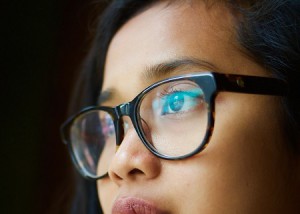Introduction
 Whether you’re finding yourself needing a pair of glasses for the first time, or you’ve recently had the opportunity to upgrade your frames, you might be curious about what sort of glasses frames that you should pick to suit your look. Of course, everyone has their own unique physical traits that set them apart from everyone else, and you should take this into consideration when choosing your glasses.
Whether you’re finding yourself needing a pair of glasses for the first time, or you’ve recently had the opportunity to upgrade your frames, you might be curious about what sort of glasses frames that you should pick to suit your look. Of course, everyone has their own unique physical traits that set them apart from everyone else, and you should take this into consideration when choosing your glasses.
Sometimes, we may love a certain style of frame and fall in love with it immediately, but it may simply not suit our face shape. Other times, we may be against a certain style of glasses in theory, but if we try it on, we may see that it actually surprisingly suits us very well. In this sense, choosing a good pair of glasses is like choosing clothes: Not only should you pick a pair that you will like, of course, but you should also consider whether it matches the shape of your face, your complexion, and of course whether it is roughly in fashion (and whether it will hopefully stay in fashion for the duration of the time that you own it).
Taking all of these factors into account when choosing glasses, especially if it is your first time, can be somewhat confusing, but it doesn’t need to be complicated. The goal of this guide is to take you step-by-step through the different aspects of choosing the right pair of frames for you, and to make it less of a mystery next time you need to get a fresh pair. The great thing about glasses after all is that they can make for a great accessory. These days, with so many people needing corrective lenses, you can see them as a common fashion statement in a sense, and as a great opportunity to express your individuality with a great pair of lenses that suit your look (and help you see!).
Your Face Shape
One of the most important factors that you should take into consideration when choosing your frames is the shape of your face. Different face shapes dictate both a different frame shape for your glasses, as well as the shape of any ornamentation on them. There are several different key points when it comes to correlating face shape with the right glasses, but overall the main principle is this: Contrast is good. You want a pair of glasses that complements the shape of your face and creates contrasting angles that will break up the lines of your face and make them more interesting.
First, begin by determining your face shape. This video should help you with that:
To make things a little more specific and concrete, let’s look at a few suggestions for different face shapes:
Round Face
In case you’re not sure what this means, a round face is basically one that is free of angularity both at the top and at the bottom, and where the width of the forehead and the width of the chin appear more or less similar. (We say “appear,” because, of course, objective measurements mean little when it comes to aesthetics. Rather than getting too caught up in the physical proportions, ask yourself how things look, even if you might realize that they consist of optical illusions.)
If you have a round face—especially if it has a soft sort of curve to it—you should pay special attention to seek harder, more dramatic lines in your frames. You would not want to add circular lenses or very curvaceous lenses to your already round face. Think glasses that have angular corners, especially the kind with a sort of pointy sweep at the top outside edges. You would probably do best with more rectangular glasses, especially ones with thick frames that have that geometric, retro look.
Square Face
A square face is basically a boxy sort of shape where the chin, forehead, and middle of the face roughly have the same width. These faces are usually rather angular, and may feature a strong jawline, especially on a man.
Again, the key here is contrast, you will probably want to choose a pair of frames that will break up the hard lines and make fore a softened look to your hard angles. Choose a pair of glasses that are rounder in shape—not necessarily perfect circles, but something approaching that. Keep free from ornamentation that is too sharp and angular as well. However, pay attention to how low the glasses fall over your cheeks, though. With round glasses, there’s always the possibility that they may hang too low and make you appear too bug-eyed; you want a pair of glasses that fits the size of your eyes and helps to bring them out, not a pair that will draw attention away from your natural good looks.
Oval Face
An oval face is a face that is narrower on the bottom than it is on the top, resulting is something of a pointy chin. It is roundish, but the top and bottom of the face are of different widths, and the jaw is not very angular as with more square faces.
Unlike a lot of other face shapes, oval faces can actually look quite good with large frames and the glasses won’t appear to be taking over the face. If you have an oval face, you can pull off many different types of frames, actually, but you might want to shoot for largish frames that are rectangular or squarish in shape, or that are angular at the top and have a low-hanging curve near the bottom.
Triangular
A triangular face is somewhat the opposite of an oval face, except that it also has aspects of a square face. You have a triangular face if your forehead appears to have a smaller width than your chin, and if your chin and jawbone are particularly angular, with each side of your jaw set low and apart.
With this face shape, you may want to fill in that “empty” space that your smaller forehead constitutes with a pair of glasses that has ornamentation near the top, or that is simply thicker near the top of the frame and thinner on the bottom. This will help to visually balance the proportions of your face. You will also want to choose frames whose width is somewhat in between that of your jaw and that of the top of your forehead, so that it creates a pleasing progression in the lines of the sides of your head. Too small, and the frames will seem like they are squeezing your head; too wide, and it won’t look well-balanced.
As far as style and ornamentation goes, you might do well to choose a pair that has a sharp angle on the upper outer edges; this will again help to make your smaller forehead appear more in proportion with the rest of your face.
Heart
Heart-shaped faces are those that are noticeably wider in the forehead and that quickly come down to a taper in the chin. The chin might be roundish, but it can also have a pointer look; the forehead, however, is round and wide, roughly similar to the pattern of a Valentine heart, which is where it gets its name.
Some people with face shapes like these may be described as having a “five head,” but don’t take that too personally if you happen to have this kind of face. Large foreheads can actually be an aesthetic advantage because they can help a person give off an impression of intelligence due to the way that the face shape makes the eyes appear prominent, especially if one chooses the right glasses to pull the look together.
For best result, pick glasses that are slightly wider at the top than they are at the bottom, and that have an angled edge near the top. The frame should be a little wider than your forehead in order to help dwarf it a little and not make it seem quite as wide. Another strategy to balance out your proportions may be to choose a pair of frames that tends to angle downwards, in order to direct an observers eyes away from your forehead and towards your chin; this will even things out a little better.
Of course, not everyone falls strictly into a single one of these categories. Face shapes can be diverse, and you may have a combination of two or more of the described shapes, but chances are that you have a dominant type. Regardless, just stick to the general rule of evening out proportions and avoiding exaggerating your already prominent features and you should be fine. Remember: Contrast is your friend. If you have a big forehead and small chin, build it up with detailing towards the bottom of the frame; if you have a big chin and small forehead, build up the forehead by making the frames thicker towards the top. If this seems simple, it’s because it is; the rules of proportions have not changed for thousands of years, so look towards the classics for inspiration if you would like.
For a more visual summary of the whole process, take a look a this video:
Figuring out your general face shape and observing the tips described here is the first step towards finding the right style of glasses for you, but of course it is not the only factor that you’ll have to consider. The next part of the journey that will be worth your focus is deciding what sort of color glasses would work best with your particular complexion.
Your Complexion
Human skin comes in all sorts of different colors and shades, and whatever sort of color the skin of your face happens to be can affect what sort of frames you should get for your glasses. As with the issue of face shapes, you’re going to want to choose a frame color that contrasts that of your face, and helps both your unique facial features and those of your glasses pop out at the world. The last thing you want is to waste an opportunity to have your glasses make a bold statement with color by blending in blandly with your face.
 |
 |
 |
Light Skin
With light skin, you’re going to want to choose glasses in a darker shade to complement your tone. Of course, there are many different shades of light skin, and you’re going to have to take this into account as well. If you have simply pale skin, without a reddish or pinkish tint, you will want to add a little bit of that blushing color by grabbing some darker frames that incorporate some red or rose-colored tones. You may also do well with blue frames, though make sure that it’s not too dark or dramatic of a blue, like Navy blue, because you’re ideally trying to add a splash of lively color to the pallor of your face. Try to stay away from green or yellow here, however.
If instead, you already have a pinkish light tone to your face, you may want to try some dark brown frames, something warm with a rich, organic look to it. Purple might even work well, so long as the color is deep enough, and maybe mixed with a bit of red.
Tan Skin
If your skin tone is more medium—between light and dark—a good choice would be frames with a complex light blue color, especially when mixed with green. Try turquoise or another color that is reminiscent of the ocean. If reds are more your style, you might do well with a dark pink or pinkish purple, like the color of a sunset. You also might want to try a frame that mixes several tones together and gives you a more complex look. In general, avoid colors that are too pastel or light.
Dark Skin
Many different colors of frames look good with darker skin, but the lighter brown shades look great, as well as copper, silver, and other metal-based colors. Deep grays can also complement your features, especially if your skin tends to have a warm glow to it. If your skin is particularly dark, a royal purple color or a deep red might work well, too. Should you decide to go with a green tone, make sure that it is a deep green.
Your Personality
Unlike the other factors that we’ve discussed up to this point, of course something like your personality is hard to quantify. There are many more different kinds of personalities than there are face shapes, as you probably already know, and even within the realm of each of these personality types, every person is made up of all sorts of little detailed and unique characteristics.
There are some generalizations that we can make, however, and you can use these general tips to help cater the look of your frames to the kind of personality that you have and the kind of image that you would like to project to others. What sort of impression you wish to make towards others (whether it is accurate or not) is a complicated subject, so let’s try to reduce it as much as we can to the basics and go from there. Pick a general image that suits you (or what you’re trying to achieve):
Intelligent / Bookish / Business
Sure, the smart, nerdy kinds of people aren’t exactly the first kinds of people you think of as card-carrying members of the Cool Club, but believe it or not, people have a lot of respect for those who seem serious, committed, and quietly intelligent. If you work in a kind of field where these sorts of traits—or at least, giving off the impression that you have these sorts of traits—can pay dividends, like engineering or accounting, then it might be a good idea to pick glasses that give off a classic and conservative look.
How do you do that? Pick neutral tones if you can (if they work well with your skin tone), mundane dark colors that don’t stand out too much. If you think that’s too depressing, try something cold and metallic, like a hard silver or copper color—something that might match the color of the legs of your work desk. Think about the colors and tones of an office, and try to match them.
The frame should be as minimalistic and functional as possible, so you will want it to lack any sort of flair or ornamentation. It’s perfectly fine to choose a contemporary style, but make sure that it also fits in well with the classics. Just a standard pair of oval-shaped glasses (so long as it works with your face shape) might be exactly what you need.
Creative / Eccentric
It’s hard to be unique these days when everyone else is also trying to be unique in their own unique way—uniquely. This is very much a modern problem, because it’s not uncommon these days for most people to fancy themselves creative or eccentric types; it happens to be in style, in fact.
If you’d like to let your artistic style show, you don’t need to do anything crazy. Some of the best creators are modern, while still acknowledging the past. Vintage is the best way to go really, but the specifics depend on what type of “creative” personality you’re trying to project exactly. If you’re going for the starving artist / starving writer look, pick a modern version of a classic frame, like a wayfarer style, and make the colors dark and dramatic.
On the other hand, if you’re going for a more exciting musician look, you might try something more angular. Aviator glasses or cat-eye glasses will probably give you that slightly rebellious edge that most people expect from someone in a band, and they are reliable, classic styles as well.
Athletic
Athletes advertise their passion for sport by much more than just their hobbies. You can often tell if someone is “sporty” just by looking at them, since they tend to dress for the occasion, sometimes donning sportswear even where it may not be totally called for. If you’re going for that image where people assume you are perpetually headed for the gym, the best way to ensure that no one forgets that you like to work out is to take thousands of gym selfies in the locker room mirror and post them of Facebook. The next best thing, of course, is to have glasses that put your sportiness on display.
Since fit people jog and engage in other strenuous or dangerous activities, make sure that your frames are durable. The best kind are the ones that are reminiscent of sunglasses—and in fact, photochromatic lenses might be what you’re looking for if you really do like to spend a lot of time outside exercising. The more aerodynamic the glasses look, the better, as they will often serve as visors to spare your eyes from the rushing wind. Go with wrap-around glasses if you can and other goggle-type styles.
Sophisticated
If you want to appear fashionable and like you have paid attention to your appearance with deliberate intention, you might want to pick some frames that are tastefully geometric. Attractive angles suggest that deliberateness in your look, and it would match well with other angular accessories that you may have. Nothing says good taste like the pleasing lines of some well-proportioned glasses.
To add an even higher level of sophistication, you may want to pick a frame that has a more intricate design to it. Go for a pair that has some kind of ornamentation, especially if it flares up at the top out edges. This effect is often better if it is subtle from far away, but the individual portions of the design become more obvious when the frame is viewed up close.
Now, is your personality necessarily pigeonholed completely into any of these various types? Probably not. Every human being is unique and has many shades to their personality; however, you can probably find some traits that you have in common with these highly generalized types and you can extract some tips on how to choose your own particular style of glasses.
Fashion
Perhaps you’re the “sophisticated” type mentioned earlier, or maybe you’re just someone who appreciates coordinating all of their accessories with your eye-wear. Either way, you can’t deny that there is just something aesthetically pleasing about someone whose glasses go well with their outfit and with their overall look. It makes you look more “put together” to have paid attention to such details, and some people in your life—like superiors at work, for instance—may actually appreciate that kind of effort, even if it seems superficial at first blush. If you don’t pay much attention to that sort of thing, then you might do well to start, since as much as you may not like the idea, the way you look and the way you coordinate your appearance every morning can give off a very lasting impression to others. Some of those people who are looking at you may indeed not matter, but when someone who does matter takes notice, you’ll be glad that they did.
Now, if you are the kind who understands the importance of your image and style, you might be planning to buy more than one pair of spectacles with this very situation in mind. If you tend to wear many different types of outfits, it makes sense to have several different types of glasses frames, after all; but even if you only have one pair, that may very well be enough to match your wardrobe if you have a specific style that you tend to stick to.
How do you match your frames to the outfits of your choice, though? Like anything having to do with fashion, there is no total consensus—it is an art, not a science—and a lot of it depends on your personal style. But of course there are some general rules that you might do well to follow when you’re looking for a cohesive presentation.
First and foremost, ask yourself a few questions:
1) Are you interested in following trends or not?
If you’re the kind of person who likes to wear what’s in style, then you might want to stick to frames that will pass the test of time and is not subject to trends of the moment. Does this seem ironic? As much as you may ache for something equally trendy in your eye-wear, usually glasses are meant to be kept for years—not months, the way that trendy clothes are—so you might just want to go with a pair that have a classic look and that have been “in style” for a few decades already, because they can continue to match your evolving wardrobe. If they haven’t lost their appeal for twenty years, they will probably still be relevant for some time to come.
On the other hand, if you’re not interested in following any trends, and just have your own particular style that stays consistent throughout the years, you don’t have to necessarily pick a classic or time-honored style of glasses—just pick a frame that works well with the style of most of the clothes that you wear. Unless you’re planning a huge overhaul of your closet sometime soon, stick to the basics, and stick to what fits the things that you already have.
2) What sort of personality do your clothes project?
This is important, because just as your glasses project a certain image and personality, your clothes can, too, and you don’t want to send mixed messages. If the work clothes that fill your closet are an array of conservative suits, match them with glasses that look similarly business-like and that reinforce your conservative image.
Now, there are times that you may want to send mixed messages, of course, but don’t do it without being aware. The first rule of breaking rules is to never break a rule accidentally. Always know what sort of things you are communicating with your look, lest you give off an impression that you don’t intend.
3) What kind of colors do you normally wear?
You want colors that complement each other. If you’re not sure how to tell which colors work to complement which others, pull out a color wheel and see for yourself. For instance, purple and yellow complement each other well, as do orange and blue. If you happen to be color blind, ask someone to guide you when you are coordinating your outfit.
Once you’ve answered these basic questions for yourself, you can start to get an idea of how to go about building your look. It’s a fairly simple, straight-forward process, but as you are choosing your outfit and accessories, keep these tips in mind:
A) Start with the glasses
Obviously, you probably have more clothes than glasses, so when you’re digging around your closet for various items and trying to see what will match together, remember the style and color of your glasses and use it as a backbone to put your outfit together. It is easier after all to have one central item from which to “hang” everything else than to try to construct order out of pure chaos.
Especially when you are dealing with smaller accessories like jewelry, consider your glasses first and try not to pick anything that will especially clash with the style. Your glasses will be the focal point of your face, the first “decoration” towards which the eyes of others will be drawn, and you want everything else to cater towards this.
B) Don’t get too particular about color…or about anything
It makes much more sense to match the style of your clothes with a certain style of glasses than it makes to match the colors. Eyeglasses will always tend to run in a different sort of pallet than clothes will, and that’s perfectly fine, so a lot of the time you might want to mostly ignore color altogether. After all, if you have jet black frames, this doesn’t mean that you have to look like you’re going to a funeral every day.
Concentrate on the wider style over small details in ornamentation as well. Try to be more general than literal in your translation of the style of your glasses into the style of your clothes. Think “business” or “creative” or “sophisticated” and match your glasses to your clothes using this more abstract idea.
At the end of the day, it’s no use getting caught up in the details anyway, since the first place people look is you. They will notice how well your glasses fit you and how well your clothes fit you long before they ever notice how well they fit each other. Remember that you are dressing yourself and that you are looking for something that will communicate who you are inside; don’t become a slave to any one detail or accessory, even your glasses.
C) Dress appropriately
Of course, different times call for different clothes—and different frames. Think about the sort of occasion you are getting dressed up for. If you have multiple pairs and you are heading to a solemn or serious event, you might want to wear your most conservative looking glasses that match your most conservative outfit. Remember that it is not simply a matter of matching your clothes to your glasses, but also of matching both of them to your outside environment. There are times to stand out and there are times to blend in, and your whole look should ideally reflect that.
Now that you’ve learned about how to coordinate your outfit with your glasses, hopefully it is a little easier to put together the kind of look that you’re aiming for. Glasses can really change the impression that your face makes to others, so it’s smart to always choose clothes that doesn’t detract from your glasses and that doesn’t distract people away from that central focal point that your glasses create around your eyes and face. Think about whether you’re interested in following trends, and choose glasses accordingly. Try to keep the style of your glasses and the style of your clothes in sync, and don’t worry too much about coordinating colors or other more minor details. Above all, make sure that everything—your glasses, your outfit, and your accessories—all reflect your personality, match the social occasion that you are wearing them to, and don’t give off too many mixed messages.
A Final Word
Consider yourself lucky that you have to wear glasses. Believe it or not, there are people in this world that covet the sophisticated, mature look that glasses can provide to a person, and some people even wear non-prescription or lens-less glasses in order to increase the level of respect that they receive from people. This may sound silly to you if you’ve had to wear glasses all your life and wish that you didn’t necessarily have to, but perhaps it gives you something to think about; behind many (seeming) disadvantages, there are often hidden advantages. This isn’t meant as a philosophical guide by any means, as you might have noticed, but it’s good to observe this mindset nonetheless as you look for your next pair of glasses. It helps to keep a positive outlook if you are looking for positive results in any endeavor, even something as simple as choosing your frames.
Regardless of whether you can find it in you to be grateful for your glasses, hopefully you’ve found some use in the tips mentioned throughout this book and hopefully you have learned a little about how to make the most of the glasses that you have. Glasses can not only help you to see, but can help others to see the real you, if you pay close enough attention to what it is that your frames are communicating.
You have learned to match your glasses to your face shape, and have read about the importance of proportions when it comes to the lines of your face. You have learned about how you can use glasses to your advantage to achieve this, balancing out a large forehead or a weak chin with the angles of a good frame. You have learned about how your complexion can influence what sort of frame colors look good on you, and that contrast is always a very good thing.
You might have also learned that glasses can make very interesting accessories that communicate a lot about our personalities to others. As people’s eyes are usually first drawn to ours, the first thing they may notice about you are your glasses, and so it is important to find one that accentuates your personality, or at the very least helps communicate the sort of image and impression that you are trying to give to others around you. For example, if you want to communicate an air of “business,” then don’t wear glasses that are too detailed and busy in their design.
Finally, you learned about fashion and how we can design our outfit around our glasses, giving ourselves a cohesive look. And of course, sometimes matching our glasses and our outfits to our personalities is more important than matching all of our clothes and accessories to each other; the central unifying factor to all that you wear is you, after all.
Now take a look at this video and keep in mind everything that you’ve learned so far. It’ll really help to cement down the whole process.
With the information in this article, you should now be ready to choose what color and style of glasses will best suit you on several different levels. Of course, any one article will never be a substitute for a stylist or a technician who has seen quite a few faces and has experience in finding the perfect pair for a certain shape or look, but sometimes all that we need to find the right frames for ourselves is a little bit of information and an open mind. By all means, ask one of the employees after your next optometrist appointment what sort of style of frame you should get next, and don’t hesitate to ask questions or to be picky until you have found the perfect pair that will make you feel like you look good.
Happy hunting!




8 Responses
Linda
Wow! There is a tremendous amount of information available in this post. I’ve worn glasses for many years and never really considered most of these things in making my decision. Your pointers make a lot of sense. I will probably never look at the purchase of glasses quite the same again :) Thanks for giving me a new perspective!
Julie
Hi Linda! I was oblivious to it all myself until I started working in the industry. But don’t be overwhelmed, I have written a lot of information, but that doesn’t mean it has to be complicated! Most of it we already know intuitively when we start trying on glasses. Hope you find a pair that suits you perfectly :)
Eric
Wow… I never knew that there was so much in choosing a pair of glasses. My wife and daughter wear glasses and when they update every year or so they would spend hours choosing a pair each. Next time they update I will be a bit more considerate and let them take their time instead of just saying “It’s just a pair of glasses just choose one already” Thanks
Julie
Hi Eric!
Well if your wife and daughter are anything like me, they just have to try on every frame on the board before they can be comfortable making a decision! Then they eliminate a few, and here comes round two of trying on! Ha ha, yes it can be quite a process!
I’m sure they’ll appreciate your patience with them next time ;)
Matt
Wow! What a great, informative article. You are truly a ‘face’ expert. I didn’t know there was so much to consider before choosing your glasses. I absolutely love your passion for choosing the most perfect fashionable pair of glasses for your specific face. Keep up the good work Julie.
Julie
Hi Matt,
I too thought there was nothing to choosing glasses at first. But when I started to helping people with their frame selection where I worked, it quickly became obvious that there are some frames that work for some people, and some that most certainly do not! I learned a lot at that job and I’m happy to pass my knowledge along.
Thanks for reading :)
John Savage
Hey, really cool post.
I’m just wondering…….. do you have a series of pictures or a way in which I can upload a picture of my face? You could advise/critique?!
That would be really cool. for example I have an oval face and although I have read the above, id love your thoughts before I make a decision
Aside from that, thank you.
John
Julie
Hi John! Thank you so much for your great suggestion. Although I personally don’t know how to program that into my website, maybe I can find a plugin where that is possible…
Alternately, I know many websites that sell glasses allow you to take photos with various frames on. If you want to send me a screenshot of you trying any frames you’d like some feedback on, I’d be more than happy to take a look and tell you what I think!
You can send me photos at julie@contactsadvice.com
I look forward to hearing from you :)